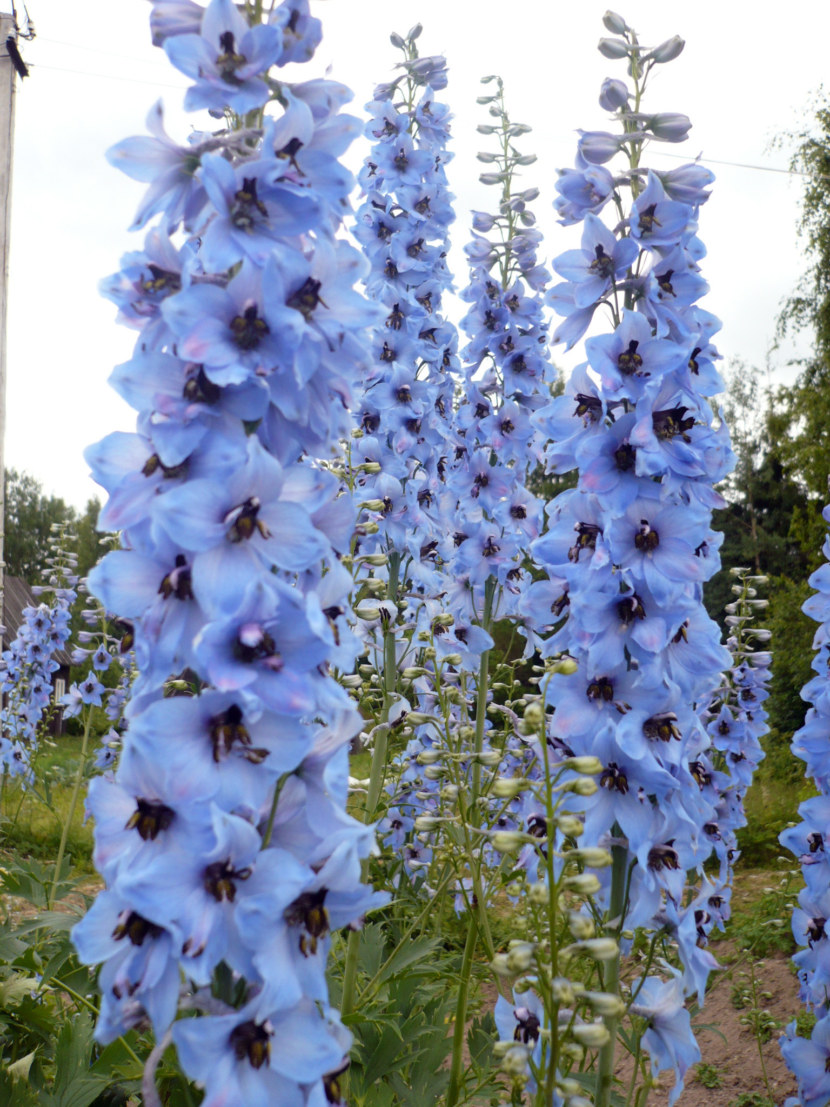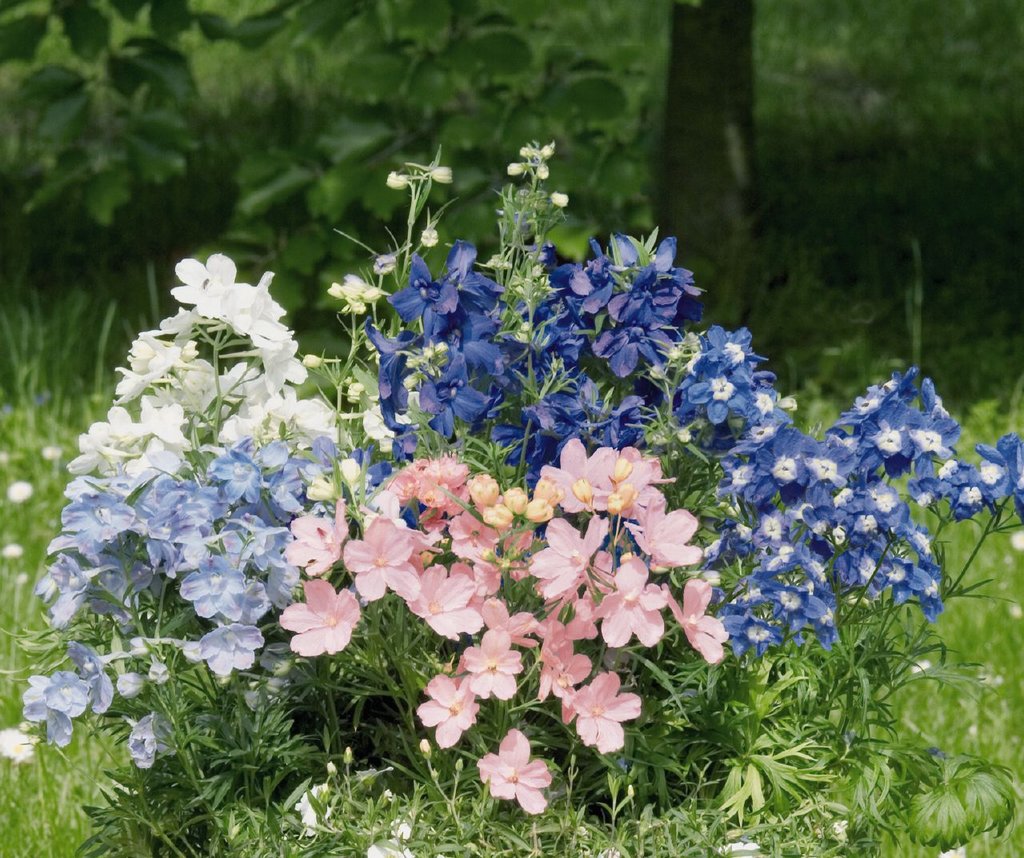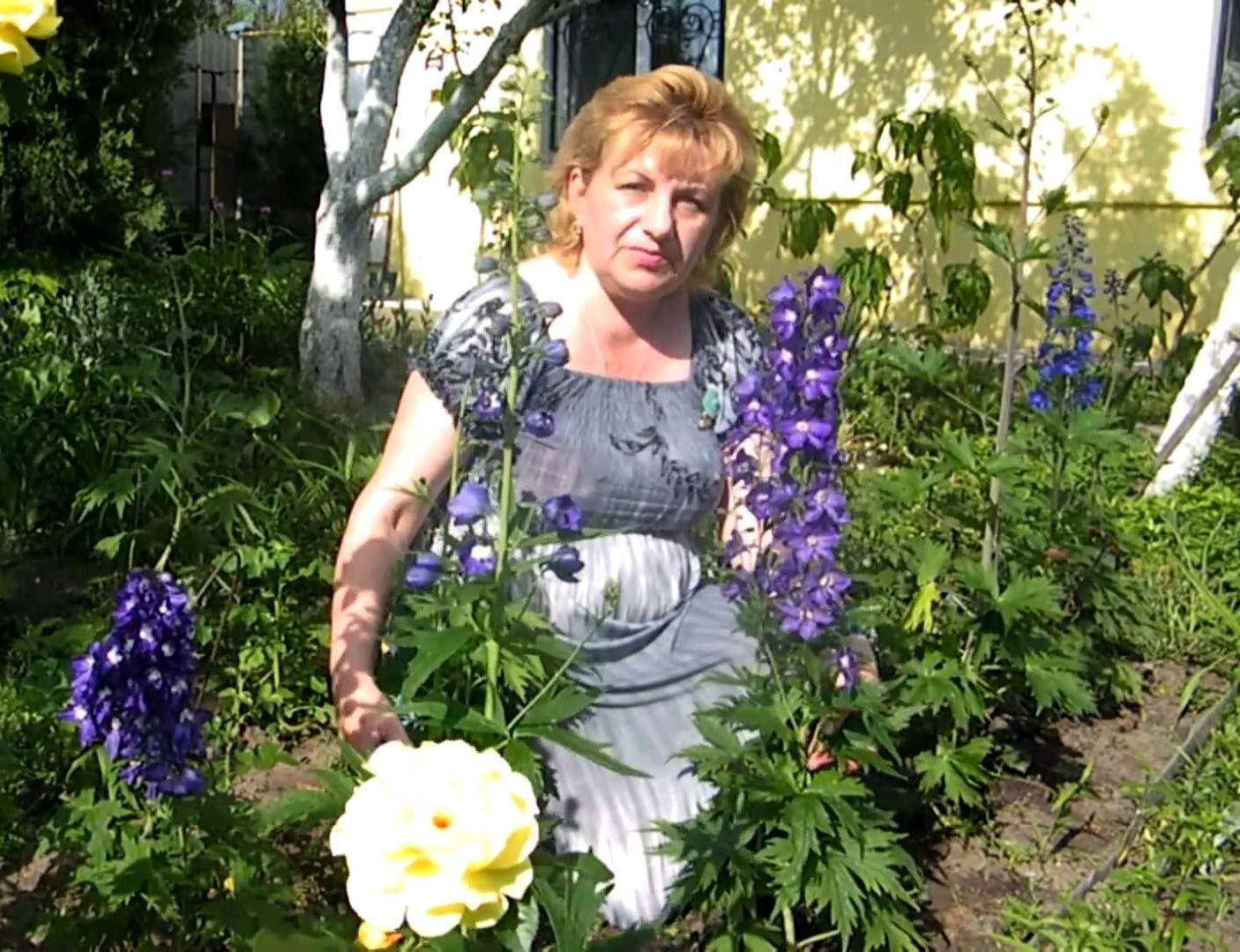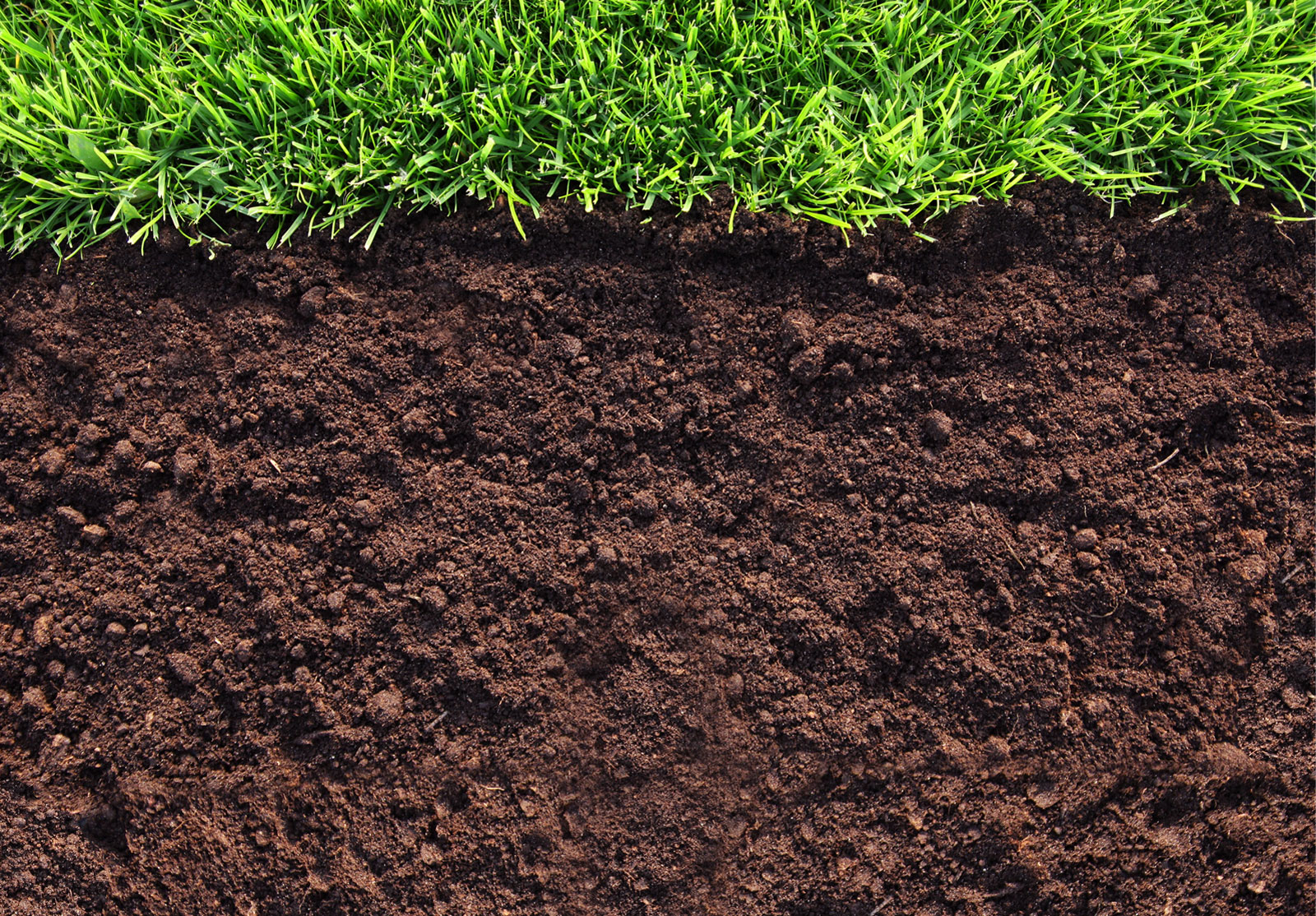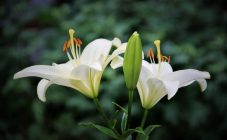Content:
Spur, or larkspur, as it is customary to call a flower among the people, is very popular among amateur gardeners. And the increased interest in him is justified. This is one of the few plants for open ground, the flowers of which are painted in a variety of shades. The article will discuss when to transplant a delphinium and how to do it correctly.
Perennial delphinium: planting and care in the open field
The plant is perennial, reaches a height of 2 m. Flowers are collected in inflorescences in the form of bunches or panicles.
The spur is a rather capricious plant, but proper planting and increased attention to care will help achieve the long-awaited flowering. The plant does not like extremes. The sun tolerates calmly, but not the midday heat. He needs shading at noon.
Delphinium needs high-quality soil with fertilizers and minerals. The soil should not be dry or wet. If the soil is too waterlogged in the garden, then you will need to dig grooves for the outflow of water, otherwise the flower will not survive.
Fertilize the soil three times a year. Mineral and organic complexes will be needed. It is required to loosen the ground.
In the autumn, the flower is cut off. But this procedure must be carried out correctly. The cut flower stem is completely protected from moisture: you can sprinkle it with earth or smear it with clay. So the delphinium will perfectly tolerate the removal of shoots.
Reproduction is usually carried out by cutting the root with a shovel. Leave one part of the rhizome in the ground, the other dive to the chosen place.
Immediately after transplanting, the delphinium is fed with nutritional supplements and watered abundantly. It is necessary to plant at a distance of 40 cm from each other, since the flowers grow voluminous and they can be cramped.
Ways to protect the plant:
- cultivate the land with potassium permanganate;
- the bush is sprayed with fungicides;
- use a solution of ammonia - 2 tbsp. spoons for 10 liters of water;
- use tar water - 1 tbsp. spoon for 5 liters of water.
When can you transplant a delphinium from one place to another
You can transplant a flower in spring in April and May, in late summer and autumn and until mid-September.
The bush should not be dived often. Better to transplant at the age of 4-5 years. Some gardeners do this once every 3 years.
If an adult plant begins to hurt, the reason may lie in choosing the wrong place. Then it needs to be transplanted as early as possible. This is done regardless of the time of year, even in July. This is a necessary measure.
Delphinium transplant: when is better
However, there is no consensus among flower growers when to transplant a perennial delphinium. Some varieties are preferable to transplant in the fall, while others - in the spring.
Summer
A delphinium transplant is possible in the summer, but there are some nuances.The main thing is that this can be done only in August, when it has already faded. How to transplant a delphinium in the summer? The procedure is carried out in the same way as in spring or September.
In autumn
Autumn transplantation of burgers is carried out mainly for reproduction. The procedure can be carried out in one of two ways:
- Division of the rhizome into parts. This option is good for plants that are overgrown. To do this, the perennial must be dug, the bush must be divided into parts, each of which must be planted in a previously prepared area. Everything should be done carefully so as not to damage the roots. If you accidentally hit them with a shovel, the adult plant and shoot will die.
- Cuttings. This method is troublesome and requires a lot of time. Gardeners don't often use it. In practice, with this seating, the flower most often dies.
The landing site is prepared in advance. Since the plant is whimsical, you need to choose a place protected from winds and drafts. The disembarkation is carried out 50 cm from each other.
In the spring
This period of the year is considered the most suitable when you can transplant the delphinium to another place. But it is important to remember that it is better to do this in early and mid-April. The main thing is to wait until the frost has finally passed.
The main reasons for transplanting in spring:
- transplanting a plant into open ground;
- planting extra young shoots;
- moving from the wrong place;
- transplanting an adult bush for rejuvenation.
Seedlings, which are grown at home, are sent to the prepared soil and the selected place after hardening. You need to adhere to a distance of 60 cm between the shoots.
Adult flowers are transplanted from one site to another, if the conditions for correct planting have not been taken into account. They are tolerated when they stop hurting and wasting away.
How and where to plant a delphinium
How to plant a delphinium? If you need to transplant old bushes, adhere to the following procedure:
- dig out bushes if they have reached 15 cm;
- with a sharp knife, cut them into several parts, so that each one has 2 shoots;
- the place of the cut is treated with charcoal;
- the roots are cleaned of the remnants of the earth, the damaged ones are cut off;
- shoots are planted in pots filled with a composition of fertile soil, sand and humus;
- containers are taken to the greenhouse for 2 weeks;
- then you can transplant shoots into the ground.
The steps to transplant a new plant are simple. New flowers are fed and watered abundantly. The site is prepared in the same way as when landing.
Seat selection
With the right choice of the site, the flower will bloom in all its glory after 2-3 weeks. Criterias of choice:
- A site protected from the wind is selected. Since the flowers are tall, they can break with strong impulses, so shoots above 50 cm are tied to pegs.
- You should not plant a delphinium where groundwater flows nearby.
- They are looking for such a place so that the sun's rays fall on the flower both in the morning and in the evening, and shade at noon. The spur tolerates heat well. Only bright flowers fade in the sun.
- Do not plant in areas with stagnant moisture. If the melt and rainwater is not absorbed into the ground for a long time, the roots of the plants will begin to rot.
Soil preparation
The best soil for a delphinium is moderately moist loam or sandy loam, which are rich in organic matter, neutral or slightly acidic.
Clay soil is combined with sand (2 buckets), minerals (80 g per 1 m²), compost (25 kg per 1 m²).
Poor soils are fertilized with various minerals and organic matter. The acidic earth needs to be limed.
Transplant scheme
Experienced growers advise to prepare the land for planting a plant in this way:
- dig up soil on a shovel bayonet;
- place drainage with a layer of 20 cm;
- the excavated earth is mixed with 1 bucket of compost, 2 tbsp. ash, 1 tbsp. bone meal and 2 tbsp. spoons of superphosphate. The mixture is designed for 1 m².
- the bed will turn out to be sublime, the plants love it.
Tips and tricks from experienced florists
The spur is not easy to care for, but everything will work out if you adhere to the following rules:
- Flowers respond well to organic fertilizers. You need to distribute the compost under the bushes twice a year - in spring and autumn.
- You need to regularly weed the ground under the plant. It is required to destroy weeds and loosen the soil.
- To prevent the appearance of viral fungi, it is worth sprinkling the leaves with ash.
- Collect seeds in dry warm weather from brown bolls that are slightly unripe.
Reproduction of a perennial by dividing a plant is a risky and difficult process, so care must be taken. If some part of the rhizome is slightly damaged when dividing with a shovel, and the grower transferred it to a permanent place with soil, then there is a high probability of death of both parts of the flower. They can wither immediately or after a long period of time.
Do not be afraid to transplant a delphinium. The grower will definitely succeed. The main thing is to do it at the right time and with the utmost care!
